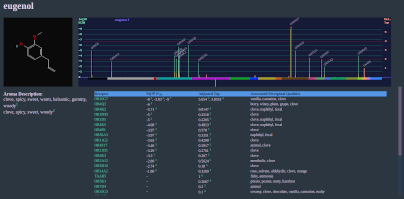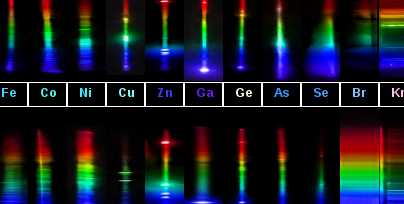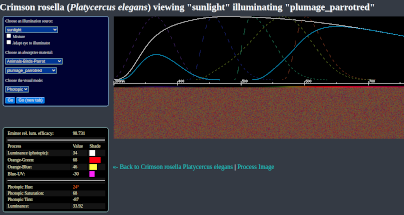Science!
Organic Chemistry

Here I try to make organic chemistry fun and easy to learn, by mixing awkwardly worded explanations with ridiculous attempts at humor. But hey, the small number of scattered visuals are nice at least, or I like to tell myself so.
PrimaryOdors

We know how many primary colors there are, how many primary touch sensations, and have a pretty good idea about primary tastes. We know how frequencies of sound are detected and that our sense of hearing processes by pitch and timbre. but what about smell? I attempt to unravel how olfaction is encoded and which notes combine to form familiar aromas, before discovering that the experimental data are way too incomplete, receptor activation is hopelessly complex, and predicting receptor responses basically requires a quantum computer, then getting knockout drunk and exclaiming %@#& it all.
Element Spectra

Different gases electrified in glass tubes produce distinctive colors of light. So do metals when sparked, or their salts in a flame. I've obtained as many pure elements as I could, in order to visually observe and photograph their spectra. The result is a collection of spectra in the visible region, and in a few cases the near infrared, whose line intensities can be considered visually accurate but not much else.
AVIAn

What does a sunflower look like to a honeybee? Or banana spots to a fruit fly? Do our pets see any of the colors in and around our homes? Can a painting of blue sky fool a pigeon? Are bats really blind? And what's up with the mantis shrimp anyway? I've collected data about many species of animal, both vertebrate and invertebrate, to understand how they might perceive color in their world and in ours, because I have no capacity for empathy or compassion towards humans but I'll enthusiastically imagine what it must be like to be a damn bug.
Infrared Photography

The infrared region is a vast expanse. If a digital camera is made without an IR-block filter, it can be used to take pictures in near infrared, up to 1 micron wavelength, where leaves shine like silver, clouds loom brightly against a dark sky, and many of our plastic and fabric items appear much paler than we see them as. Out around ten times these wavelengths, we can take pictures that reveal temperature, since everything around us is glowing in thermal infrared at all times, and if it mattered a hill of beans we'd have evolved to be able to see it.
Ultraviolet Photography

Nature is full of organisms signalling each other in ultraviolet. Insects respond eagerly to these wavelengths, and most vertebrates see ultraviolet as a fourth primary color. Even some butterflies get to experience this tetrachromacy. We mammals, including primates, are colorblind by comparison; in a tetrachromatic world, our trichromacy means we miss out on some really fascinating - and beautiful - sights. Luckily, specially designed cameras can reveal what our eyes fail to perceive. I spent $500 on high end scientific light filters and put them between a sleazy magnifying glass and a cheap, low quality camera module connected to a slow, barely responsive controller board, and these grainy blurry photos are the fruit borne by that effort.
The Genetic Code

Sixty-four codons? Twenty amino acids? Start and stop codons? Too complex! No one could possibly remember them all. Here's some gibberish disguised as mnemonics that won't make sense meaning you'll actually quickly forget the ostensible memory aid and end up right back to where you started from.